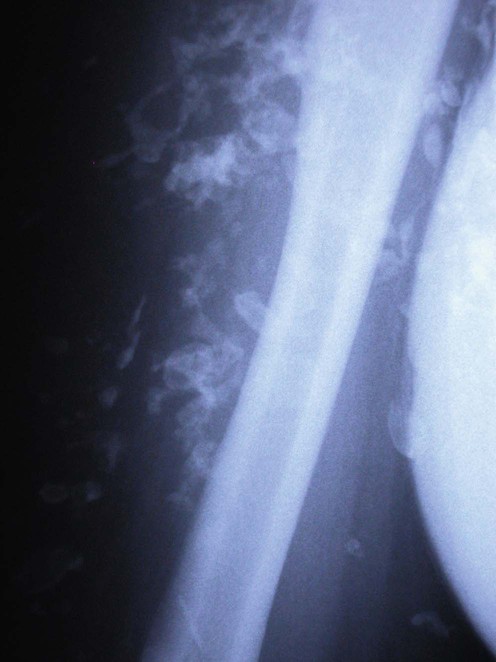Calcinosis cutis

 Idiopathic: occurs without tissue injury or metabolic defect (e.g., idiopathic scrotal calcinosis).
Idiopathic: occurs without tissue injury or metabolic defect (e.g., idiopathic scrotal calcinosis).
 Dystrophic: secondary to local tissue damage or alterations in collagen, elastin or subcutaneous fat but normal calcium and phosphate levels (e.g., in connective tissue diseases, post trauma or infection).
Dystrophic: secondary to local tissue damage or alterations in collagen, elastin or subcutaneous fat but normal calcium and phosphate levels (e.g., in connective tissue diseases, post trauma or infection).
 Metastatic: abnormal calcium and/or phosphate metabolism leading to precipitation of calcium salts in normal tissue.
Metastatic: abnormal calcium and/or phosphate metabolism leading to precipitation of calcium salts in normal tissue.
 Iatrogenic: secondary to a treatment or procedure (such as extravasation of calcium or phosphate infusions).
Iatrogenic: secondary to a treatment or procedure (such as extravasation of calcium or phosphate infusions).
First-line therapies












 No treatment/self-healing
No treatment/self-healing Aluminum hydroxide
Aluminum hydroxide Intralesional corticosteroid
Intralesional corticosteroid Diltiazem
Diltiazem